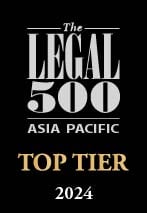How to avoid the pitfalls and blind spots of Conflicts of Interests for Accountants
/Managing potential conflicts of interest and threats to objectivity is a fundamental requirement for chartered accountants and assurance practitioners in complying with their professional and ethical obligations. But all too often identifying and addressing conflicts of interest can be a ‘blind spot’, regardless of a practitioner’s level of experience.
According to Chartered Accountants Australia and New Zealand (CA ANZ), actual or perceived conflicts of interest regularly feature as one of the main sources of client complaints. A failure to identify and evaluate conflicts of interest can lead to disciplinary sanctions including a reprimand, quality review of a member’s practice, a fine and/or suspension or termination of membership.
What Standards apply?
New Zealand resident members of CA ANZ are required to comply with the New Zealand Institute of Chartered Accountants (NZICA) professional and ethical standards, including the NZICA Code of Ethics. Assurance practitioners in New Zealand are also subject to PES 1: International Code of Ethics for Assurance Practitioners (including International Independence Standards) (New Zealand).
Section 110 of the Code of Ethics provides that objectivity – that is the exercise of professional or business judgment without being compromised by conflict of interest, bias, or undue influence – is one of the five fundamental principles of ethics. The Code sets out a conceptual framework for identifying, evaluating, and addressing threats to compliance with the fundamental principles (section 120). Sections 220 and 310 provide specific rules on conflicts for members in public practice and members in business, respectively.
The Code incorporates the requirements of PES 1 in relation to audit, review, and other assurance engagements at Parts 4A and 4B of the Code. In particular, it is of critical importance that members comply with the Independence Standards and demonstrate appropriate levels of professional scepticism which may be threatened by conflicts of interest.
What steps must a practitioner take?
It is inevitable that, in the course of practice, conflicts of interests will arise from time to time. Conflicts of interest commonly arise in circumstances where a practitioner is wearing multiple hats in providing their services or where the client’s circumstances change over time and fails to recognise the threat posed or put appropriate safeguards in place.
The Code and best practice requires practitioners to undertake the following steps to identify, evaluate and address conflicts of interest:
Identify potential, perceived or actual conflicts of interest: While some conflict of interests will be clear, such as advising two parties on either side of a transaction, other conflicts of interest are routinely missed due to an over familiarity with the client, diverging clients’ interests or the loss of perspective.
Common examples are where the relationship is evolving, and interests may no longer be aligned, such as matrimonial or partner/shareholder disputes. In these circumstances, a practitioner may genuinely believe or assume they are continuing to act in the best interests of more than one client and fail to identify the conflict. It is, therefore, very important to implement effective policies and procedures to identify and manage or reduce the risk of conflicts and ‘blind spots’.
Evaluate whether the threat is at an “acceptable level”: As soon as a conflict is identified, and before the engagement commences or further work is undertaken, a practitioner should evaluate whether the risk can be eliminated or whether safeguards can be put in place to reduce the risk. The standard applied by the Code is whether a reasonable and informed third party, weighing all the facts and circumstances, would likely reach the same conclusion.
Address the conflict of interest: If it is determined that the conflict is not at an acceptable level, the next step is to address the threat by either:
Eliminating the circumstances creating the conflict of interest threat: It may be possible to address the conflict by eliminating the underlying circumstances. This might include, for example, selling any shares the practitioner holds in the client or a prospective supplier, not continuing to act for one of the parties on a transaction or resigning from other roles the practitioner may hold such as a trustee or director.
Apply appropriate safeguards where available: This might include implementing mechanisms to prevent the unauthorised disclosure of confidential information between two clients with competing interests, independent and objective review of the engagement by a partner or senior practitioner not involved in the engagement, using different engagement teams to carry out the work with appropriate information barriers (where there is a client between two clients), or requiring the client to obtain independent advice on contentious matters which might give rise to the conflict.
Declining or ending the professional activity: It the conflict still cannot be adequately addressed, the practitioner should decline or end the engagement.
Disclose the conflict and obtain consent to continue to act (where appropriate): Where a conflict of interest is identified and safeguards are put in place, it is still necessary to disclose in writing the nature of the conflict and the related safeguards to all clients or potential clients affected by the conflict. The informed consent of the client should be obtained in writing to continue to act and, if necessary, the client should be advised to obtain independent legal advice. It is important to remember that even if informed consent is obtained, it remains necessary to ensure that appropriate safeguards are maintained and monitored.
Re-evaluate the professional activity and associate relationships: As noted above, breaches of conflict of interest rules commonly arise where a practitioner is either not alert to, or fails to take appropriate steps, to re-evaluate the position when a client’s circumstances change or the interests of clients which were previously aligned begin to diverge. The Code requires practitioners to “have an inquiring mind” which means being alert to new information and changes in facts and circumstances.
Document how each of the steps have been addressed: Documenting each of the above steps is crucial to ensuring compliance with the Code and will put a practitioner in a much stronger position to defend any potential complaints that may arise. This will remove or minimise any doubt about whether the risk of conflict was identified and properly managed. Ideally, a firm or practice should have policies and templates in place for documenting any threat of conflict, the proposed safeguards and preferably the informed consent of the client to continue to act.
The key takeaway from all of this is to ensure you have established and maintained a conflict management process to identify, manage and safeguard against the risks of conflict. You should also continually review and re-evaluate the circumstances of a client engagement, and to maintain proper documentation of these steps.








